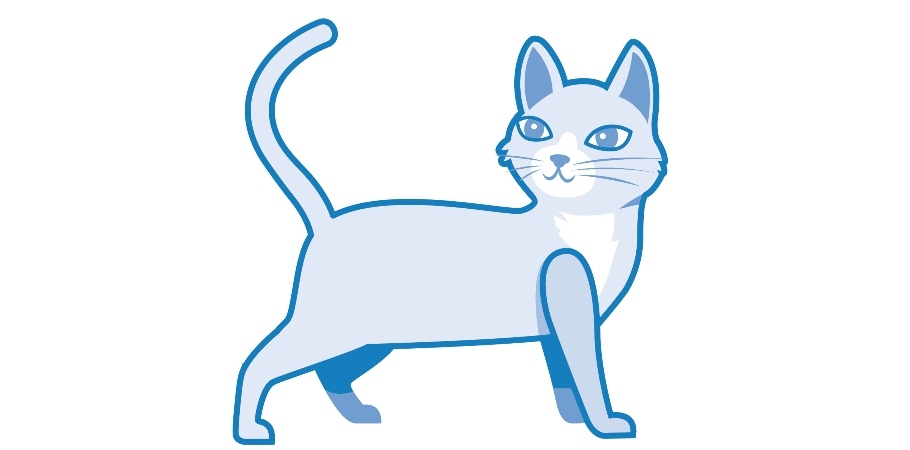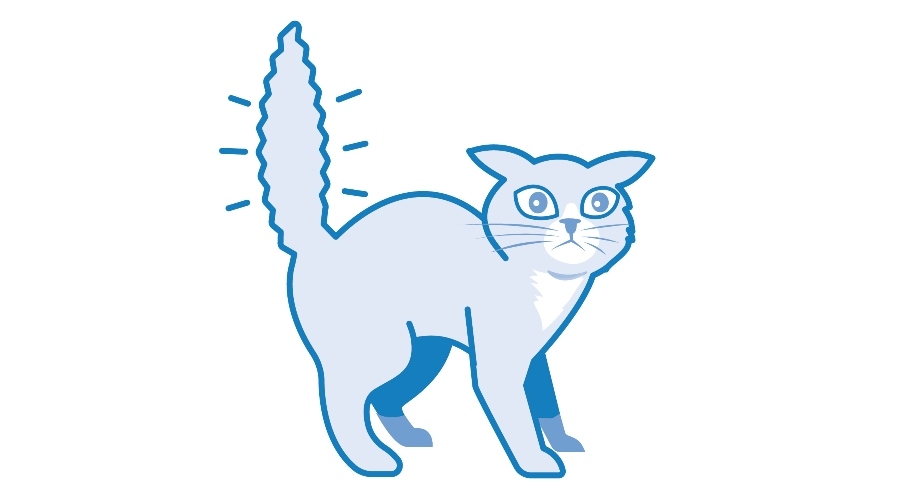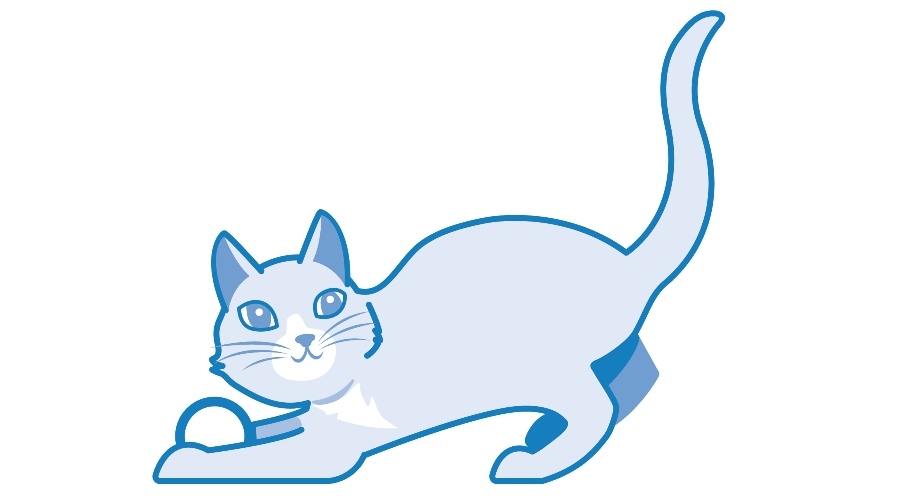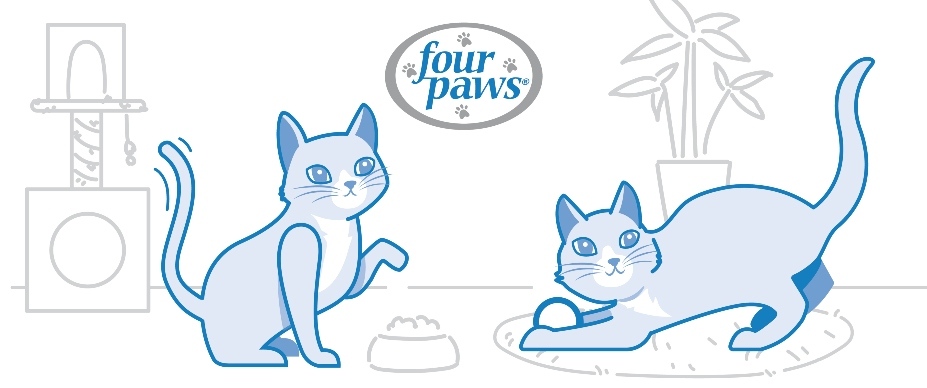Decoding Cat Body Language
From meeting new people to reacting to odd sounds, there are many instances where cats use their body to communicate their emotions. Reading the signals of our feline friends’ ears, tail, and everything in between may help answer the daily question, “what is my cat trying to tell me?”
Learn these cat body language signs using our guide and corresponding visuals to find out how your furry friend is feeling.
Calm, Cool Kitty

Eyes: A relaxed cat can be found with their eyes half open while peacefully taking in their surroundings. Fully closed eyes mean your kitty feels very safe and may be enjoying a cat nap, so try not to wake them!
Ears: Upright ears with gentle flicks and twitches signal comfort and ease.
Tail: Your cat is likely content if their tail is held high yet relaxed. If you’re standing near them, their tail may also curl around your legs to show they feel secure.
Body: Overall, a calm cat breathes slowly and steadily with their claws tucked away. Their stature is loose and does not hold tension.
Scaredy Cat

Eyes: Whether your feline friend is startled by a loud noise or in the bathtub for the first time, their eyes may provide clear indication they’re anxious. Wide eyes mean your kitty is taking in as much information of their surroundings as possible.
Ears: When cats’ ears are leaning back or flat against the head, they signify nervousness—much like their canine counterparts.
Tail: If your cat’s tail is fluffed up and rigid or tucked between their legs, this reaction is typically triggered by a spontaneous action or startling sound. Like the classic Halloween cat, an upright tail can also be a tell-tail sign your cat feels frightened.
Body: Similar to a human in distress, a cat carries tension in their back. In moments of anxiety, their posture arches and the claws instinctually expose themselves.
Friendly Fuzzball

Eyes: When your kitty is in a playful mood, their eyes are alert and partially wide, ready to catch any action. They may also make eye contact with you or search for their toys when they’re in a happy state of mind.
Ears: Upright ears that consistently twitch signal excitement and engagement. Your cat is likely aware of every sound occurring around them.
Tail: While cats’ tails don’t necessarily wag, they can still indicate playfulness. A curling or swinging tail shows your furry friend is feeling energetic.
Body: When your cat is in a fun mood, their posture will be low arching and balanced. This way, your kitty will be quick to jump and catch whatever playtime throws at them.
➔ RELATED: Cat Playtime (Tips for Safe Family Play)
Frustrated Feline

Eyes: Comparable to the human “side-eye,” cats in a poor mood may look at you or their surroundings with an irritated demeanor. Eyes half-closed with dilated pupils may suggest your feline friend isn’t enjoying the moment.
Ears: Tense, twitching ears or ears that lean backward are synonymous with your cat being bothered, much like when they are fearful or anxious.
Tail: When your cat’s tail is swinging at a mid or low level, they may be assuming the hunting position. If they are acting sneaky, your cat may try to keep their tail down in an effort to not disclose their location.
Body: Much like their feline ancestors, a frustrated cat’s posture is tense and low to the ground, as though they are on the prowl. If they are trying to appear threatening, their back will arch slowly to make themselves seem bigger. Keep an eye out for exposed claws, too!
Paws Up!
As much as we wish we could read our furry friends’ minds, learning these signals is the closest we can come to answering the question, “what is my cat trying to tell me?” Understanding cat body language can not only help you figure out how your feline is feeling, but also help you anticipate what silly or intriguing move they might make next.
Now that you can recognize your cat’s emotions, learn more about their behavior with these 7 quirky kitty habits.








